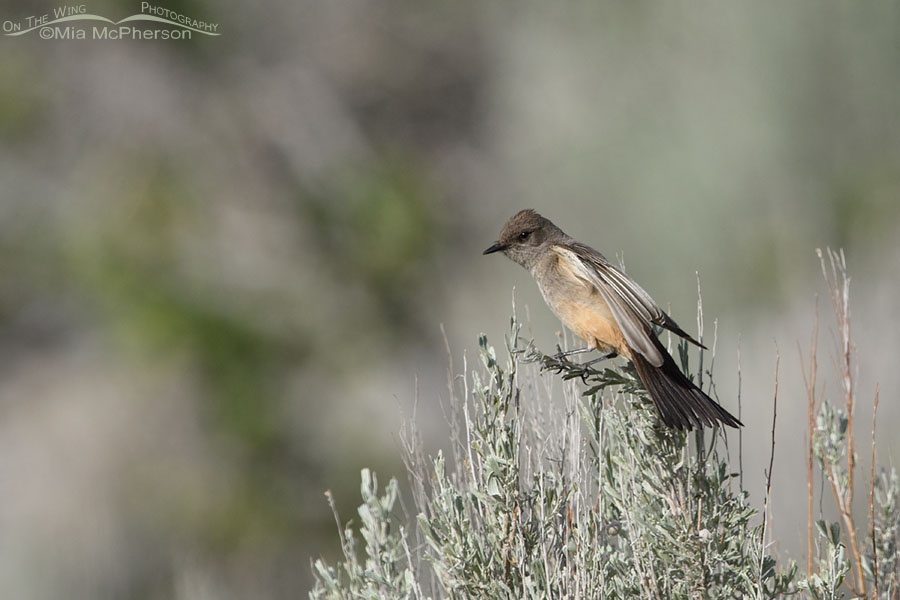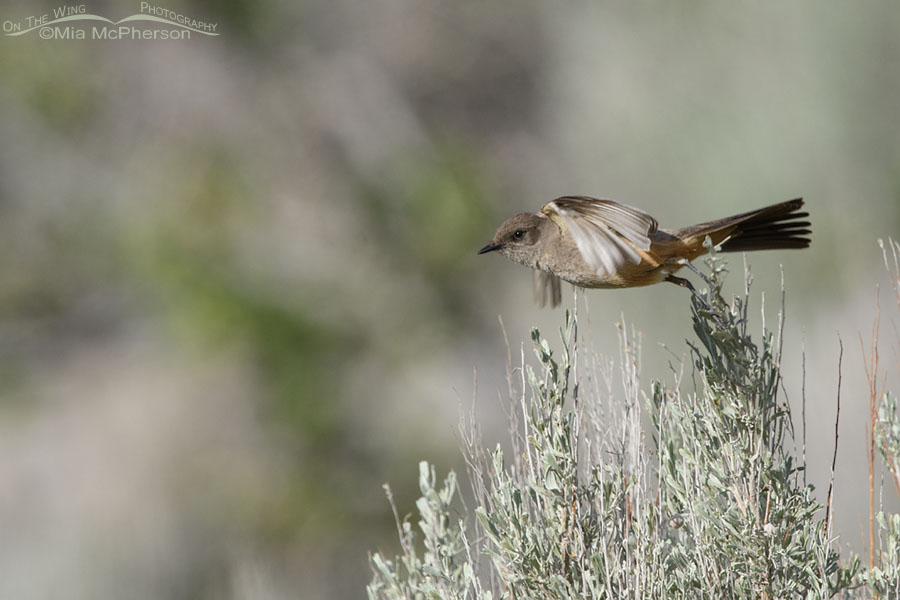 Say’s Phoebe perched precariously on sage – Nikon D500, f7.1, 1/2000, ISO 500, Nikkor 500mm VR with 1.4x TC, natural light
Say’s Phoebe perched precariously on sage – Nikon D500, f7.1, 1/2000, ISO 500, Nikkor 500mm VR with 1.4x TC, natural light
One year ago today I photographed this Say’s Phoebe in a desert area of Box Elder County in northern Utah as it perched precariously on sage. As I photographed this rufous bellied phoebe I observed it catching prey for its young that were up the hill begging to be fed.
Say’s Phoebes have an honorific common name. In 1825 French naturalist Charles Lucien Bonaparte described a specimen collected near Pueblo, Colorado and named this species after Thomas Say, an American entomologist, conchologist, and herpetologist. Say’s name is in both the common name, Say’s Phoebe, and the scientific name, Sayornis saya, of this species. That is how Say’s Phoebes got their name.
But the common name only tells us that this species is a phoebe and nothing more.
 Adult Say’s Phoebe taking off from sage – Nikon D500, f7.1, 1/1600, ISO 500, Nikkor 500mm VR with 1.4x TC, natural light
Adult Say’s Phoebe taking off from sage – Nikon D500, f7.1, 1/1600, ISO 500, Nikkor 500mm VR with 1.4x TC, natural light
There is a movement to rename birds that were given honorific and eponymous common names and I support it.
Descriptive common names such as Broad-tailed Hummingbird, Marsh Wren, Red-eyed Vireo, or Black Phoebe make more sense and are more descriptive of the actual bird species than tacking the name of a human onto a bird. The movement also aims to rename birds whose honorific common names are associated with racism, and yes, I fully support that as well.
I think Rufous-bellied Phoebe would be a great name instead of Say’s Phoebe, with or without the hyphen. It is certainly more descriptive. Plus a name like Rufous-bellied Phoebe might make it easier for new birders to use to connect to this phoebe species.
Just a few thoughts on a Friday morning.
Life is good.
Mia
Click here to view more of my Say’s Phoebe photos plus facts and information about this species.


“are associated with racism” … REALLY??? I love your photos but your “politics” make me want to spit nails at you. Sorry.
Karen, being anti-racist isn’t about politics, it is a moral imperative. Go ahead and spit nails. I’m strong enough to take that.
I’m also in agreement. It would be a great thing to see happen. (I wish i had more friends who liked birds, too, so that i could tell them about your page!)
Really beautiful shots
Add me to those who would happily see rather a lot of bird’s names changed. And thank you for this rufous-bellied beauty.
I 100% agree with you and applaud whenever a patriarchal or racist name is changed! I had one of these hang around my house when I was in Eastern Colorado and she was such a joy to watch and photograph.